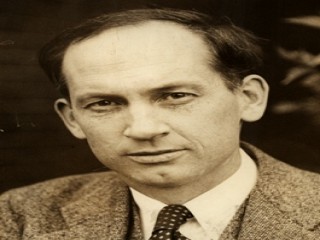
Harold Adams Innis biography
Date of birth : 1894-11-05
Date of death : 1952-11-08
Birthplace : Oxford County, Ontario, Canada
Nationality : Canadian
Category : Politics
Last modified : 2011-06-07
Credited as : Political economist, The Fur Trade in Canada, Essays in Canadian Economic History
The political economist Harold Adams Innis developed the "staple theory" of Canadian development.
Harold Adams Innis was born in 1894 in Oxford County in southwestern Ontario. His parents, who were strict Baptists, owned a moderately prosperous farm. Harold Innis started his schooling in Sunday school and the local one-room public school, moving on to the nearby Otterville High School and then to Woodstock Collegiate Institute.
In 1913 Innis entered McMaster University, at that time a Baptist college located in Toronto. He took his degree in the spring of 1916 and then, 21 years old, like so many of his friends whose lives were to be turned around by the maelstrom of World War I, he enlisted in the army. The appalling experience of the trenches and the mass slaughter of battles such as Vimy Ridge, where he was wounded, had a profound effect on Innis. As a private at the front he learned to distrust the official view of the war which was sent out from Ottawa and London, and as a Canadian, like many others of his generation, he learned that Canadians would have to interpret their own experiences and that their contribution to the war had given them a right to a new level of independence from Britain.
Returning to Canada, Innis quickly completed an M.A. degree at McMaster and then enrolled in the Ph.D. program at the University of Chicago where he studied with C. W. Wright, F. H. Knight, and J. M. Clark. Innis read and was much influenced by the work of Thorstein Veblen. It was in Chicago that Innis met and fell in love with Mary Quayle, whom he married in 1921.
In 1920 Innis completed his Ph.D. thesis and began teaching in the Department of Political Economy at the University of Toronto. His thesis subject, responding to his resolution to analyze the nature of Canadian society, had been a history of the Canadian Pacific Railway. Working on the subject as an economist with a keen historical perspective, Innis had come to a fundamentally important conclusion about Canada. The standard view was that the Confederation of 1867, the acquisition and opening up of the west, and the building of the transcontinental Canadian Pacific Railway had created Canada as an act of political will in defiance of geography. But Innis had seen that the railway had re-established an older unity that had been based on water routes. The fur trade had created the first Canadian economy as the Montreal merchants had established trade routes that spread right across the continental hinterland.
Innis' book The Fur Trade in Canada, published in 1930, was a landmark in Canadian scholarship. In the conclusion Innis set out the main themes of what became known as the "staple theory" of Canada's development. The Canadian economy, and by extension society and politics, had been formed by the exploitation of a series of resources, the staple products, for export to the countries which had colonized Canada. Canada had developed at the margin of the world economy, exporting raw materials at prices set in an economic system dominated by a succession of center countries. Each staple product—whether cod, fur, wheat, newsprint, or minerals—had its own rhythm of development and brought with it its own pattern of immigration, capital movements, and institutions. Innis went on to explore this perspective in a series of studies and seminal essays—Cod Fisheries: The History of an International Economy (1940) and Essays in Canadian Economic History, edited by Mary Quayle Innis (1954).
Innis had also seen that ideas flow along trade routes from the center to the margins. He turned his attention increasingly to the study of communications, a subject that was to lead him far from the modern empires to the Greeks, Egyptians, and Babylonians. But Innis also focussed his attention on a contemporary problem in the economics and communications of empire: the process by which Canada had distanced itself from Britain only to be embraced by the United States. This later work was reflected in Empire and Communications (1950) and Changing Concepts of Time (1952).
In addition to his writing, Innis was active in the creation of institutions to support Canadian scholarship. He remained at the University of Toronto, becoming chairman of the Department of Political Economy and dean of the graduate school. His work was honored by appointment to a fellowship of the Royal Society of Canada and honorary degrees from several universities. He became, as his colleague Donald Creighton said, "Canada's senior academic statesman" in the decade before his death from cancer in 1952.
















